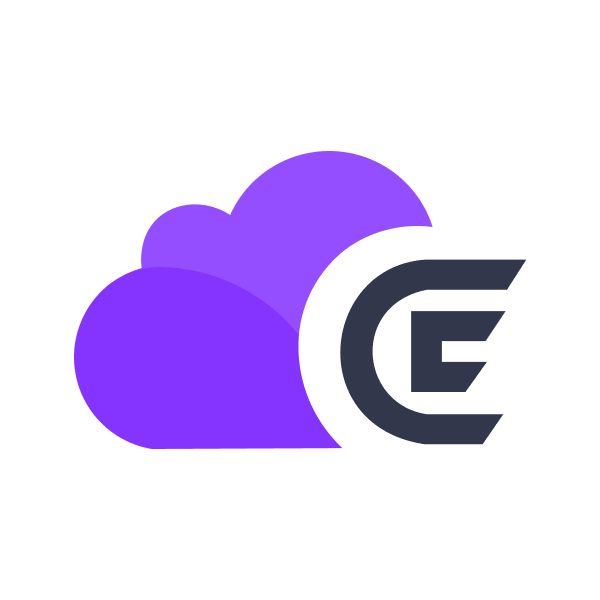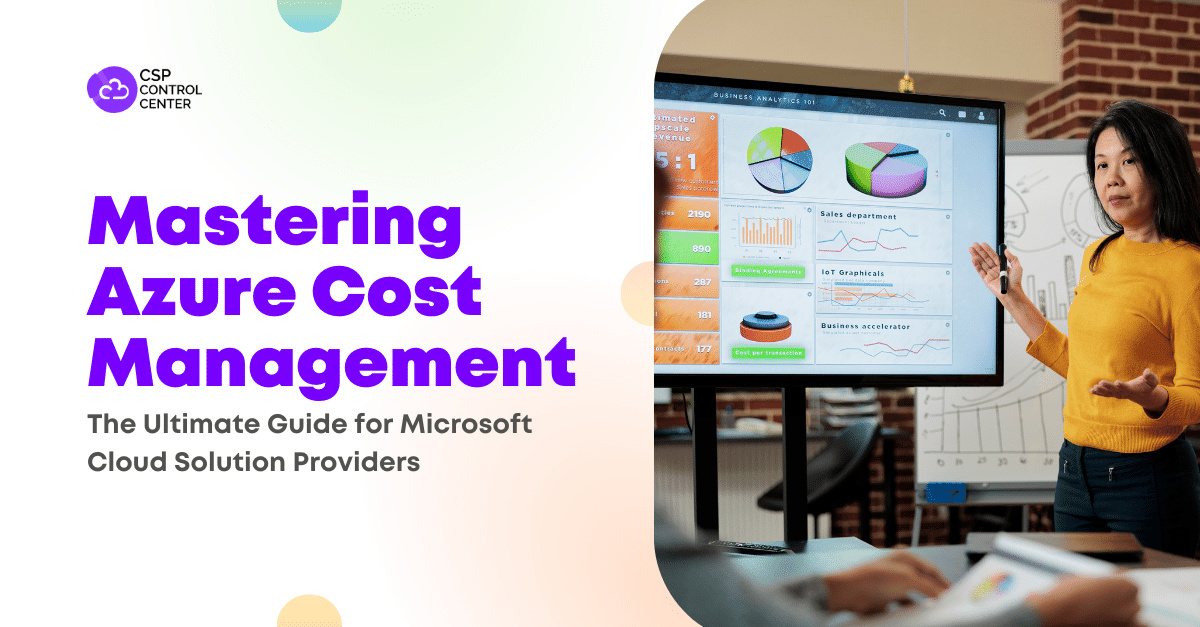The global cloud computing market is experiencing significant growth as businesses are increasingly leveraging innovative solutions to manage the ever-evolving needs of their business. In fact, according to a report published by Fortune Business Insights, “The global cloud computing market size was valued at $569.31 billion in 2022 & is projected to grow from $677.95 billion in 2023 to $2,432.87 billion by 2030 exhibiting a CAGR of 20% during the forecast period.”
As a Microsoft CSP, you play a vital role in providing Microsoft products and services to your customers. As increased businesses embrace cloud solutions to optimize operations and drive innovation, there is potential for immense growth as a Microsoft CSP. By simply selling Microsoft products and services, you will be unable to sustain long-term growth and profitability. Without expanding your service offerings your business will tend to stagnate and eventually decline. Expanding your service offerings as a Microsoft CSP involves enhancing your portfolio of services and products. Even Microsoft encourages its partners to go beyond just reselling products and explore offering value-added services, supplementary solutions, and technical expertise to effectively address the unique business needs of customers.
Enhancing service offerings as Microsoft CSP can have several benefits for your business.
Unlocking new revenue streams
Expanding and enhancing your portfolio can help you unlock new revenue streams. Having a wider range of services can help you tap into different market segments and serve a broader customer base. With the sale of other products and services, you will be able to generate additional revenue.
Positioning as trusted advisors
With a broad range of products and services, you can position your business as a trusted advisor to your customers. By expanding your service offerings, you demonstrate in-depth knowledge and expertise in different domains. A wide range of service offerings also allows you to provide your customers with a one-stop solution for all their business needs. As a result, your customers need not engage multiple vendors and you become their trusted partner providing a comprehensive package of services.
Attracting new customers
New service offerings will help cater to diverse needs and budgets. Different industries and sectors have different business needs. When you diversify your service offerings you can target such industries and customer segments that were previously overlooked. This has the potential of bringing in new customers for your Microsoft CSP business.
Adapting to customer needs
In the Microsoft CSP business, to remain relevant you must learn to adapt to the ever-changing needs of your customers. With innovative solutions, you can offer services to your customers that can meet their growth and operational changes. When you introduce new products or services that can address specific pain points for your customers, you come across as customer-centric which further cements your relationships with your customers. Failure to offer solutions that align with specific customer needs or market trends can put you at a disadvantage as you might be at risk of losing business to the competition.
Risk mitigation
When you expand your portfolio, you diversify your revenue streams. When you sell only a few products and services your business becomes vulnerable to market fluctuations and changes in customer preferences. With a broad range of services and a diversified customer base, you can protect your business against potential losses due to changes in the market or technological landscape that may impact on the demand for certain services.
Challenges Faced While Expanding Service Offerings as a Microsoft CSP
Expanding service offerings as Microsoft CSP can be quite rewarding as it offers enormous potential for business growth and increased profitability. However, offering a wide range of services comes with its own set of challenges that you will need to overcome to maximize the benefits of expanding your service offerings as a Microsoft CSP.
Evaluating market demand
One of the key challenges you might face when expanding your service offerings will be evaluating the market demand for the solutions. For this, you need to have a thorough understanding of the needs and preferences of your customers, the latest industry and technology trends, identify the gaps in existing solutions, etc. This process requires you to conduct extensive market research and analyze substantial amounts of customer data. This can be time-consuming, expensive, and you might not have the right resources or data to assess the market demand on your own. Expansion without evaluating the market demand can have negative consequences for your business. These can include low demand for the solution, lack of customer relevance, financial risks, etc.
Differentiating your offerings
The Microsoft CSP business can be quite competitive, and to stand out and attract customers, it is crucial for you to differentiate your offerings. With so much competition it becomes very difficult to differentiate your offerings when the market is already saturated with numerous providers offering similar solutions. In the absence of effective differentiation, your customers will fail to see why your solution is better than what your competitor is selling. It is difficult to keep producing new and different solutions that meet evolving customer needs and beat the competition at the same time.
Skill gaps
To develop innovative solutions, you need to have the necessary expertise and resources. The technology landscape is constantly evolving and to develop cutting-edge solutions you need people with the right skill set to support modern technologies. If your team lacks the skills or the expertise to develop and support the expanded services, then you will be unable to meet the expectations of your customers. To ensure that your team members have the necessary skill set, you will need to bridge the skill gaps by training and upskilling them. For this, you need to invest time and resources in training programs, certifications, workshops, etc. As training can be a time-consuming process, your team will have to devote time to it might impact their productivity in the day-to-day operations of your business.
Integration and compatibility
The new solutions offered may need to integrate with existing systems or technologies. Ensuring compatibility and seamless integration with existing systems and processes can be a complex task. Assorted products may have different integration requirements, which makes it challenging to achieve compatibility across the entire ecosystem. This task is made more difficult when you are dealing with legacy systems or multiple versions of software. For smooth integration, you require in-house technical expertise without which there can be a risk of disruption of operations. Expanding services may involve relying on third-party solutions as well. Incompatibilities with these solutions can also impact service expansion.
Identifying the right pricing
Setting the right pricing for new services is crucial as it will impact the competitiveness and profitability of the new services. This can be a laborious process as you will need to understand the perceived value of the services, compare the price with your competitors’ solutions, and assess the cost of developing and delivering the new services. You will also need to decide on a pricing structure such as tiered plans, subscription models, etc. If you set the price too high, you risk losing business and if you set the price too low you might end up making losses on the new service offerings. Without in-depth data and insights, it can be quite challenging to determine the right pricing for your solutions.
Operational capabilities
As you broaden your portfolio you will not just have to devote time and resources to developing innovative solutions but also maintaining them and providing the necessary support to your customers. As your portfolio expands, the volume of business will also grow, bringing in more customers. As a Microsoft CSP, managing the accounts, subscriptions, billing, etc of a large customer base can be difficult and can increase the workload of your teams leading to operational inefficiencies and delays in service delivery. With the increased number of customers, handling billing using manual processes can be complex and prone to errors leading to an increase in billing disputes and customer dissatisfaction.
Customer adoption
One of the significant challenges you can face when expanding your service offerings is customer adoption. Customers might be reluctant to invest time and money in adopting innovative solutions as they might be comfortable with their existing solutions. Customers might fail to see the value the new solution or a supplementary service can bring to their business. Customers might consider fresh solutions and services as risky due to concerns about disruptions, compatibility issues, or the need for training of their employees. Convincing customers of the benefits and return on investment of the new service offerings can be an uphill task.
How to Expand Service Offerings as a Microsoft CSP
Expanding your service offerings is essential to stay competitive and relevant in the Microsoft CSP business. As a Microsoft CSP, you need to take a strategic approach to achieve the desired diversification of your portfolio. Let us have a look at the steps you can take to expand your service offerings and drive business growth.
Identify opportunities
The first step in effectively expanding your service offerings as a Microsoft CSP is to identify opportunities in the market. Without understanding the need and demand for a particular solution you will be unable to develop a product that adds value to the customers’ business. To identify opportunities, you need to
- Conduct market research– this is needed to understand the needs, pain points, and challenges that the customers face and what solutions are currently available to address them. Market research can be done by collecting customer feedback, conducting surveys, etc. To gather this data, you can connect with your existing customers. You need to regularly engage with your existing customers to understand their changing business needs and demand for new solutions. You can also utilize social media to connect with existing as well as potential customers to conduct polls and surveys regarding new and innovative solutions. Market research should also involve understanding what solutions are being offered by your competitors so that you can identify gaps and capitalize on opportunities.
- Monitor Microsoft’s latest product offerings– Microsoft regularly keeps introducing new products and technologies for customers. By closely tracking Microsoft’s latest products and updates, you can align your expansion strategy with their offerings. This will help you identify new solutions that cater to customer needs and market demand. Attending Microsoft events, webinars, reading their blog posts, etc can be helpful in monitoring the latest product offerings.
- Stay-up-to date with emerging technologies– by staying up to date you can find innovative solutions for your customers. You can do this by tracking and analyzing industry trends, attending events and conferences, and reading market reports and industry publications.
Assess your capabilities
Before starting to develop new solutions, you need to assess your existing capabilities, expertise, resources, etc. This will help to determine which new solutions and services you can effectively deliver as well as identify any skill gaps you need to fill. To assess your capabilities, you need to evaluate the industry knowledge as well as the technical competencies and certifications of your team members. The next step would be to address the skill gaps that have been identified. To fill the skill gaps, you can either choose to upskill your existing team or hire people with the necessary expertise. On-demand, self-directed training, or blended self-study & instructor-led training are a few of the options you can choose when upskilling your team. You can find popular learning paths and modules here. Your team members can investigate earning Microsoft certifications as well as renewing existing certifications so that they can keep up to date with the latest technologies. You can read our blog, “Build technical and sales capability to grow Microsoft CSP business.” to learn more about this.
Create and market solutions
Once you have identified the business challenges that need to be addressed and assessed your capabilities, you can start developing solutions that align with the needs of the customer. Leverage your knowledge of the latest Microsoft products and technologies to develop solutions that can streamline business processes and add value to your customers. When developing solutions keep in mind that they are scalable and flexible so that they can be easily modified as per the evolving needs of your customers. To diversify your portfolio further, you can investigate adding solutions developed by ISVs and other vendors to your portfolio as well. You can learn more about providing solutions published by independent software vendors (ISVs) to your customers here.
Along with developing new solutions, you must take steps to market them as well. The first step is to identify the target audience you wish to sell your products to, then you can utilize various marketing channels such as social media, your website, e-mail campaigns, industry events, etc. When developing your marketing strategy, define your Unique Selling Point (USP), present your product in terms of value, and package your solutions in a way that is attractive. As a Microsoft CSP, you can leverage go-to-market solutions provided by Microsoft to further improve your marketing efforts. To learn more about marketing you can read “The ultimate guide to market your Microsoft CSP Business | CSP growth series” here.
Leverage automation
As a Microsoft CSP as you expand your portfolio, your team will find it challenging to manage the subscriptions, renewals, billing, etc, for a larger customer base. Manual processes such as manual billing can lead to delays, inaccuracies, and poor customer experience. To improve customer experience and increase the efficiency of your team you can explore automating certain repetitive tasks including Microsoft CSP billing. By automating the billing process, you will be able to generate accurate and timely invoices, apply the correct promotions and discounts, send automated reminders, track payments, etc. By leveraging automation, you can reduce the workload of your team and allow them time to focus on identifying new opportunities, developing new solutions, and marketing them. A Microsoft CSP billing solution with advanced reporting and analytics can help you with identifying and capitalizing on upselling and cross-selling opportunities as well.
Expand your Microsoft CSP service offerings with C3
C3 offers you the ultimate Microsoft CSP billing solution which can help you expand and diversify your Microsoft CSP portfolio. With C3 you can seamlessly sell new solutions to your existing as well as new customers. C3 offers you a muti-model platform with a self-service marketplace to manage the cloud services for your customers. You can sell your own value-added services and third-party products, define custom pricing and discounts, and create composite offers by bundling your solutions with existing Microsoft products. The self-service marketplace allows you to explore upselling and cross-selling opportunities.
You can also access extensive reporting and business analytics to understand what new features and solutions customers might be looking for and identify opportunities for portfolio expansion. By offering your customers the option of self-service combined with accurate invoicing you can enhance the customer experience and at the same time increase the productivity of your Microsoft CSP business.
Contact us to know more about how C3 can help you drive business growth and profitability.

 CSP Control Center
CSP Control Center
 CloudEvents
CloudEvents


